
சரித்திரத் தேர்ச்சி கொள். Writer. Passionate about History, Heritage and Temple architecture. Views are personal : https://t.co/aMNuIu1lq0
8 subscribers
How to get URL link on X (Twitter) App

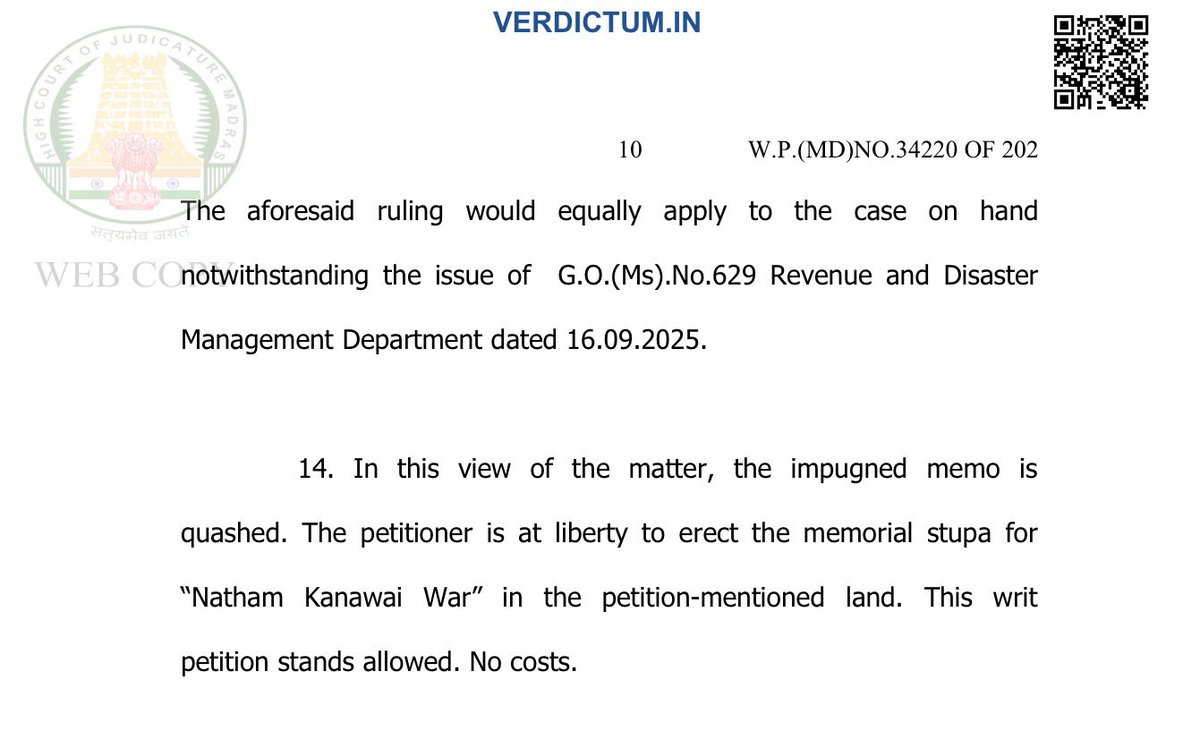
 When Yusuf Khan, also known as Marudu Nayagam, was in the service of the English, he and Colonel Heron undertook a southern expedition to collect taxes from the polygars. Kumaravadi polygar Lakshmi Nayak refused to pay the tax, following which British forces launched an attack. The local governor, Mayana, fled to the Thirumbur temple (present-day Thirumogur).
When Yusuf Khan, also known as Marudu Nayagam, was in the service of the English, he and Colonel Heron undertook a southern expedition to collect taxes from the polygars. Kumaravadi polygar Lakshmi Nayak refused to pay the tax, following which British forces launched an attack. The local governor, Mayana, fled to the Thirumbur temple (present-day Thirumogur).
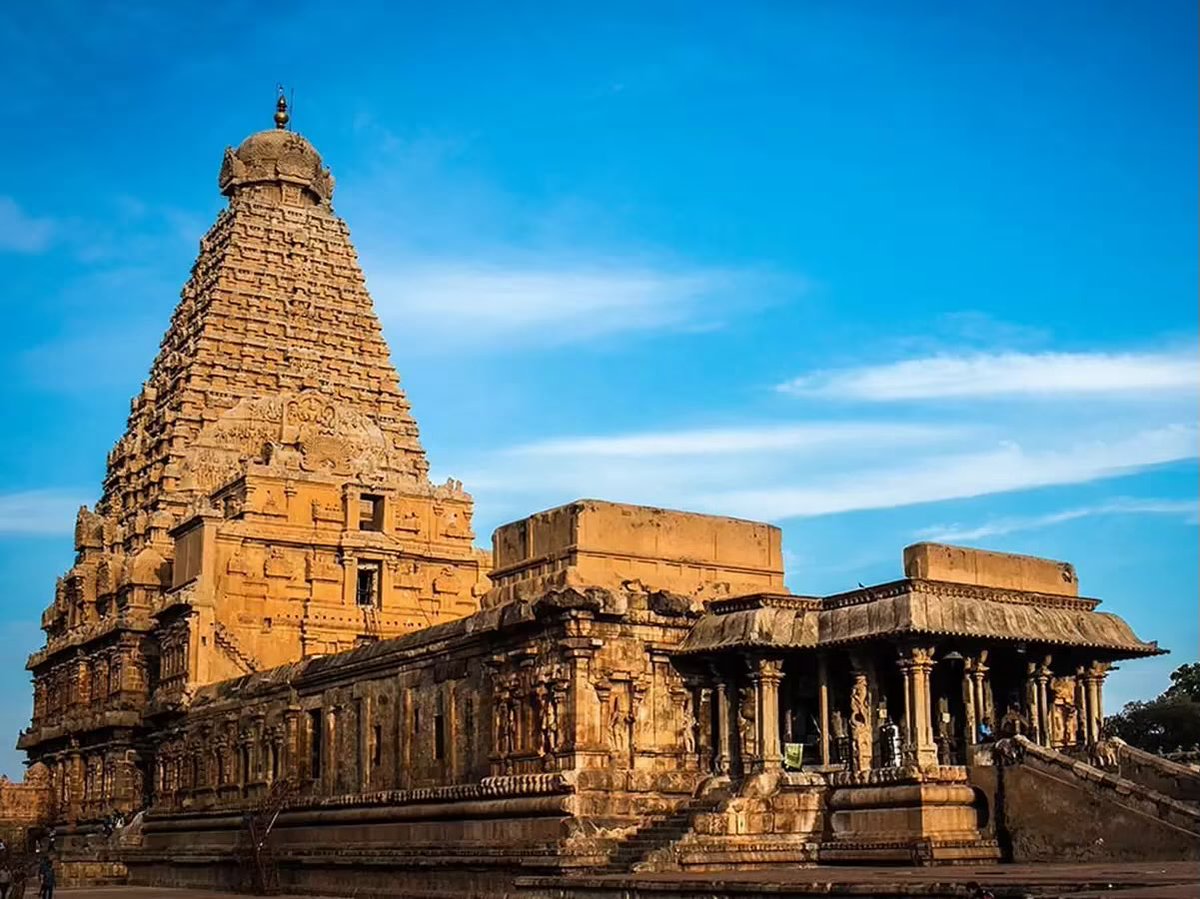

 The Chola heartland lies in a riverine region, interlaced with rivers, rivulets, and canals, which makes the soil unsuitable for holding gigantic monuments. Kunjaramallan skillfully identified a rocky foundation capable of bearing immense weight—estimated at 162 tonnes per square meter—strong enough to sustain the Big Temple
The Chola heartland lies in a riverine region, interlaced with rivers, rivulets, and canals, which makes the soil unsuitable for holding gigantic monuments. Kunjaramallan skillfully identified a rocky foundation capable of bearing immense weight—estimated at 162 tonnes per square meter—strong enough to sustain the Big Temple


 The Kudumiyanmalai Vinayaka near the famous musical inscription. The inscription at the Pandya rock cut temple was the oldest one containing the musical notes found in Tamil Nadu and dates 7-8th century.
The Kudumiyanmalai Vinayaka near the famous musical inscription. The inscription at the Pandya rock cut temple was the oldest one containing the musical notes found in Tamil Nadu and dates 7-8th century. 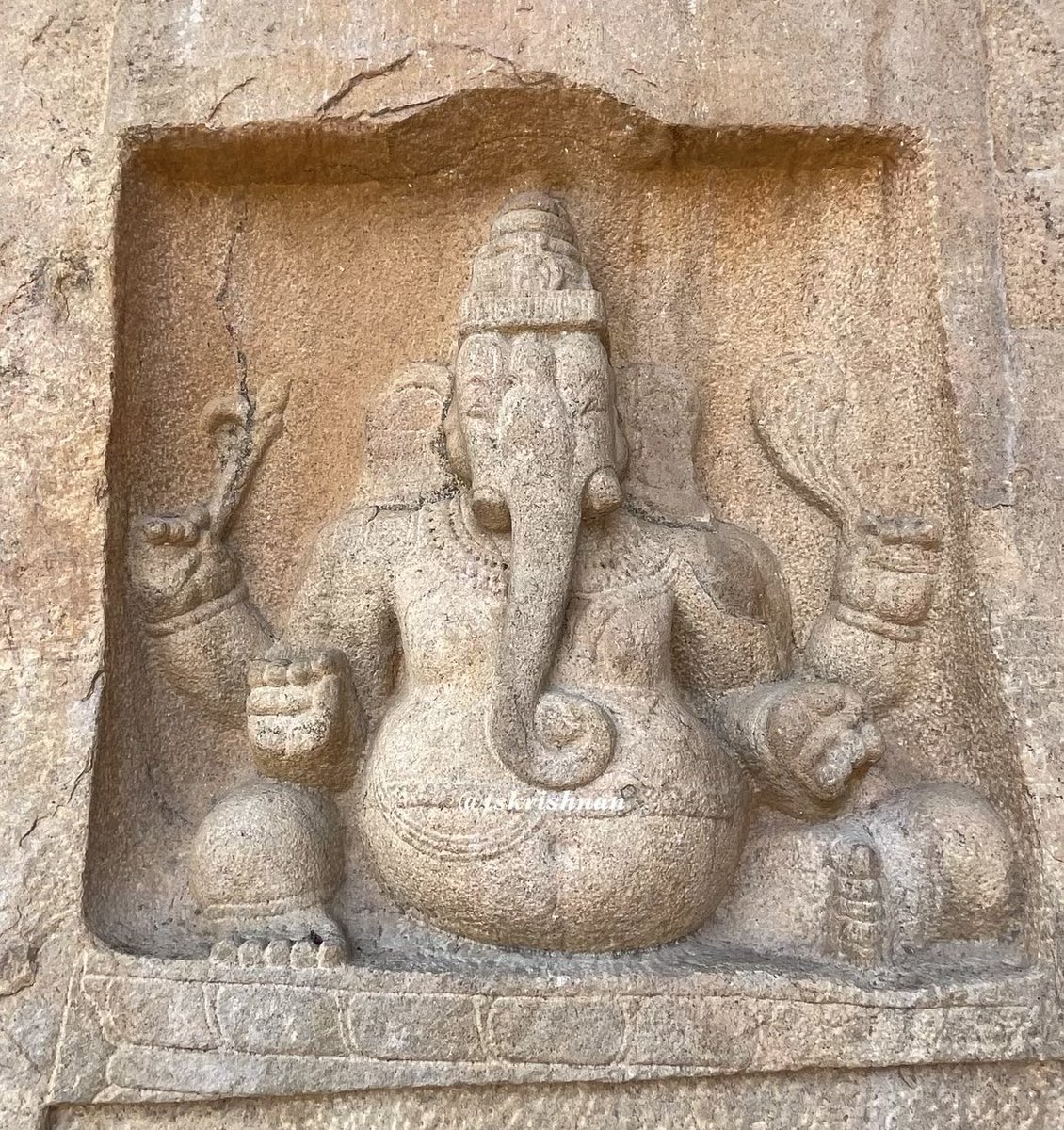
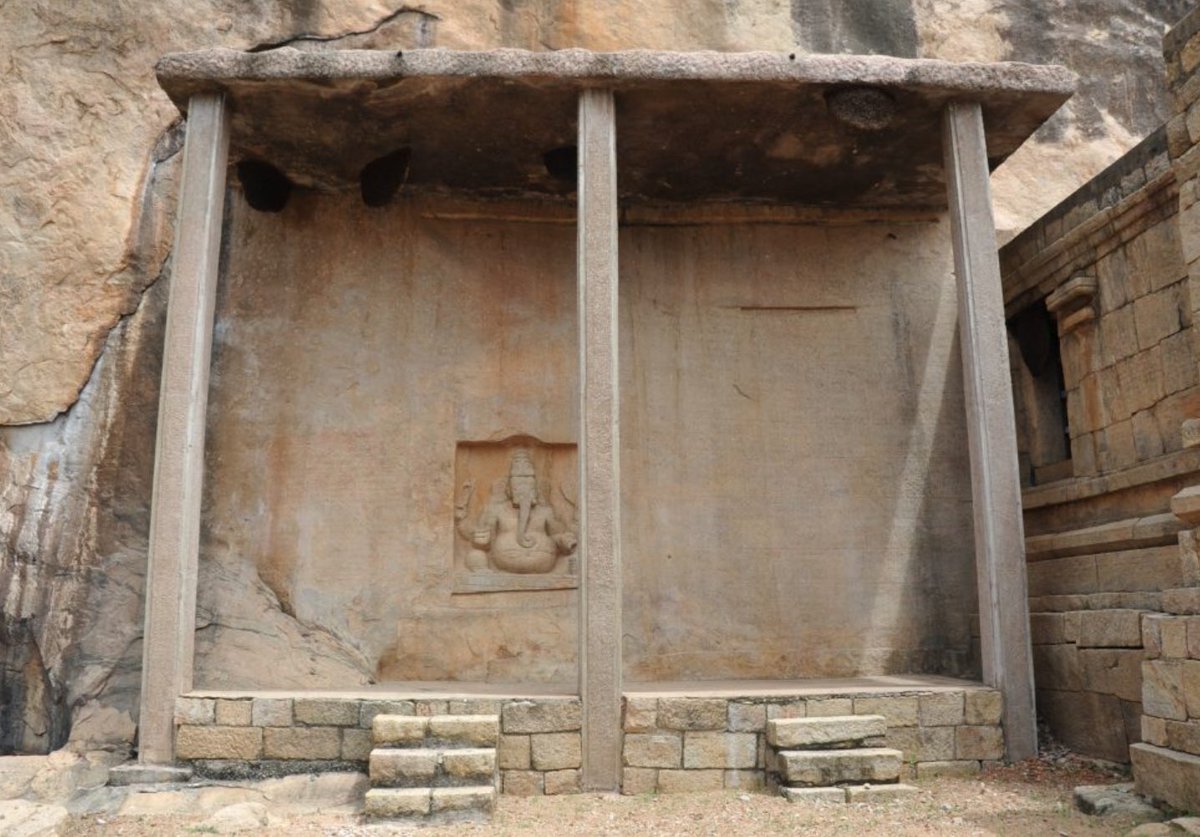

 A fragmentary pottery bowl from Arikamedu (1st century CE) has the name of Balabhuta (of Yadu clan)
A fragmentary pottery bowl from Arikamedu (1st century CE) has the name of Balabhuta (of Yadu clan) 


 In defiance, Chinna Marudhu issued the Jambudweepa Proclamation on June 16th, 1801— a bold call for a united resistance against British rule. It was posted on the walls of Trichy Fort and the Srirangam Temple. Through this proclamation, he appealed to all citizens across Bharat (India) to rise in unity and drive out the British. He warned that if the British were allowed to continue their rule, India’s cultural and civilizational heritage would face an existential threat.
In defiance, Chinna Marudhu issued the Jambudweepa Proclamation on June 16th, 1801— a bold call for a united resistance against British rule. It was posted on the walls of Trichy Fort and the Srirangam Temple. Through this proclamation, he appealed to all citizens across Bharat (India) to rise in unity and drive out the British. He warned that if the British were allowed to continue their rule, India’s cultural and civilizational heritage would face an existential threat.


 ஆரம்பத்தில் மற்ற இடங்களைப் போலவே தான் கீழடியிலும் மத்திய தொல்லியல் துறையால் ஆய்வு நடத்தப்பட்டது. 2013ம் ஆண்டு தொடங்கிய இந்த ஆய்வை நடத்தியவர் தமது ஆரம்ப அறிக்கையில் (2015-16 அந்த இடத்தை பொயுமு 300 வரை கொண்டு செல்லலாம் என்றே குறிப்பிட்டிருக்கிறார். இது AMS அதாவது Accelerator Mass Spectrometry என்ற முறையைப் பயன்படுத்திச் செய்த ஆய்வு. உலகளவில் தரமான ஆய்வு முறைகளில் ஒன்று.
ஆரம்பத்தில் மற்ற இடங்களைப் போலவே தான் கீழடியிலும் மத்திய தொல்லியல் துறையால் ஆய்வு நடத்தப்பட்டது. 2013ம் ஆண்டு தொடங்கிய இந்த ஆய்வை நடத்தியவர் தமது ஆரம்ப அறிக்கையில் (2015-16 அந்த இடத்தை பொயுமு 300 வரை கொண்டு செல்லலாம் என்றே குறிப்பிட்டிருக்கிறார். இது AMS அதாவது Accelerator Mass Spectrometry என்ற முறையைப் பயன்படுத்திச் செய்த ஆய்வு. உலகளவில் தரமான ஆய்வு முறைகளில் ஒன்று. 

 He thought of approaching Sundarar (Sundaramurthi Nayanar), a close companion of Lord Shiva, to help make this happen. However, at that time, Sundarar was suffering from a severe cough. So, Mara Nayanar began sending him thoodhuvalai keerai (a medicinal herb) every day to help him recover. Sundarar’s illness was eventually cured.
He thought of approaching Sundarar (Sundaramurthi Nayanar), a close companion of Lord Shiva, to help make this happen. However, at that time, Sundarar was suffering from a severe cough. So, Mara Nayanar began sending him thoodhuvalai keerai (a medicinal herb) every day to help him recover. Sundarar’s illness was eventually cured.




 We know that the invasion of Ulugh Khan devastated the Srirangam temple. After Kumara Kampanna regained Tamil Nadu in 1371, his commander Gopanna brought Namperumal back to Srirangam. However, it took 12 years to repair the ruined temple completely.
We know that the invasion of Ulugh Khan devastated the Srirangam temple. After Kumara Kampanna regained Tamil Nadu in 1371, his commander Gopanna brought Namperumal back to Srirangam. However, it took 12 years to repair the ruined temple completely. 

 His Meikeerthi says
His Meikeerthi says 

 There are many inscriptions about him at various temples. Notable among them is in Srirangam temple. The Kulothunga I period inscription mentions about the grants given “while Namperumal was seated at the shadow of Thiruppunai tree and listening to the Thettarum Thiral song of Sri Kulasekara Alwar”
There are many inscriptions about him at various temples. Notable among them is in Srirangam temple. The Kulothunga I period inscription mentions about the grants given “while Namperumal was seated at the shadow of Thiruppunai tree and listening to the Thettarum Thiral song of Sri Kulasekara Alwar”

 In his previous birth, he was born as a spider and used to weave a canopy above a Shivalinga to provide the shade. An elephant which does Pooja to the Shivalinga, thought the web was desecrating the Lord and removed it. Both of them fought and lost their lives.
In his previous birth, he was born as a spider and used to weave a canopy above a Shivalinga to provide the shade. An elephant which does Pooja to the Shivalinga, thought the web was desecrating the Lord and removed it. Both of them fought and lost their lives. 

 The shrines inside include Arthanareeswarar on whose name it is called as ‘Umai Andavar’ temple. It also has an inscription of Maravarman Sundara Pandiyan who rules Madurai during 13th Century.
The shrines inside include Arthanareeswarar on whose name it is called as ‘Umai Andavar’ temple. It also has an inscription of Maravarman Sundara Pandiyan who rules Madurai during 13th Century. 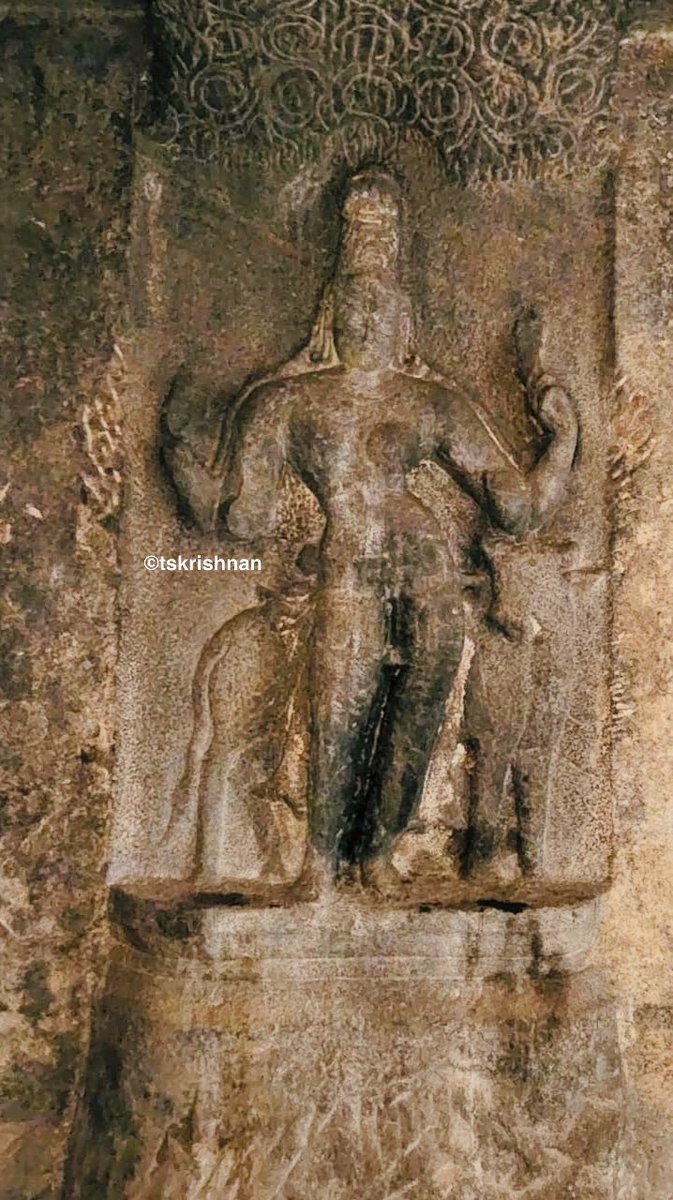

 He renovated many temples which were destroyed by Sultanate invasions. He ushered a new era in building tall Gopurams in Tamil Nadu. Tiruvannamalai Rajagopuram and Chidambaram north Gopuram are two such examples.
He renovated many temples which were destroyed by Sultanate invasions. He ushered a new era in building tall Gopurams in Tamil Nadu. Tiruvannamalai Rajagopuram and Chidambaram north Gopuram are two such examples. 

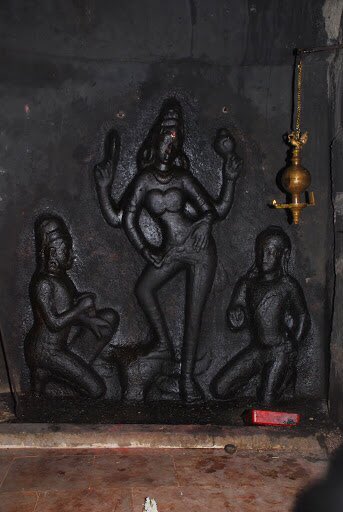
 Durga from Varaha Mandapa, Mamallapuram. A devotee performing Navakandam on the right side of the Goddess. This is one of the common features found in many of the medieval Durga panels.
Durga from Varaha Mandapa, Mamallapuram. A devotee performing Navakandam on the right side of the Goddess. This is one of the common features found in many of the medieval Durga panels. 

 "From the 11th century, the Cholas unleashed conquests across southern India and lavished Tamil temples with captured war loot"
"From the 11th century, the Cholas unleashed conquests across southern India and lavished Tamil temples with captured war loot"
 அடுத்து ஆறுபடை வீடுகளைப் பற்றி இஷ்டத்துக்கு அடித்து விடுகிறார் கட்டுரையாசிரியர். முதன்முதலில் ஆறு படை வீடுகளைப் பற்றிச் சொல்வதே சங்க இலக்கியமான திருமுருகாற்றுப்படைதான். திருப்பரங்குன்றம், திருச்செந்தூர், திருஆவினன்குடியான பழனி, திருஏராகமான சுவாமிமலை, குன்றுதோறாடல், பழமுதிர்ச்சோலை என்று வரிசைப்படுத்துபவர் சங்கப்புலவரான நக்கீரர்
அடுத்து ஆறுபடை வீடுகளைப் பற்றி இஷ்டத்துக்கு அடித்து விடுகிறார் கட்டுரையாசிரியர். முதன்முதலில் ஆறு படை வீடுகளைப் பற்றிச் சொல்வதே சங்க இலக்கியமான திருமுருகாற்றுப்படைதான். திருப்பரங்குன்றம், திருச்செந்தூர், திருஆவினன்குடியான பழனி, திருஏராகமான சுவாமிமலை, குன்றுதோறாடல், பழமுதிர்ச்சோலை என்று வரிசைப்படுத்துபவர் சங்கப்புலவரான நக்கீரர்